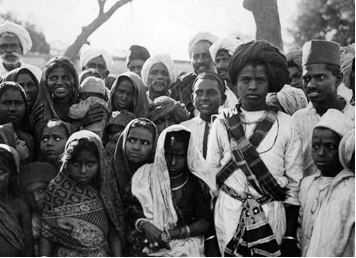Your wedding day. An occasion that for most, is one of the best days of your life. A day to celebrate the union of two people in love, committing to a life-long journey of happiness. Yet for some, marriage represents nothing more than the end of life as they know it, and opens a door to a world of abuse and disdain. This is a reality for many people and for a large proportion, married life is forced upon them and can begin as early as five years old, before even understanding existence preceding their title as husband or wife.
Child marriage, defined as “a formal marriage or informal union before the age of 18” is unfortunately the cold reality for both boys and girls in many countries; however it is girls who are disproportionately affected. It is estimated that every three seconds a young girl is forced to marry against her will. With these figures this is clearly a tradition that is unlikely to subside in the near future.
 However this is not an issue that has gone unnoticed, with many global organisations and charities aiming to eradicate this violation of basic human rights. On 17th November 2011, the United Nations General Assembly officially designated the 11th October as the first International Day of the Girl Child to recognize girl’s rights and the struggles that they go through across the globe. Last year’s theme was to focus on ‘Ending Child Marriage’ and highlighted how early betrothal not only denies a girl of her childhood, but also her education, health and her safety.
However this is not an issue that has gone unnoticed, with many global organisations and charities aiming to eradicate this violation of basic human rights. On 17th November 2011, the United Nations General Assembly officially designated the 11th October as the first International Day of the Girl Child to recognize girl’s rights and the struggles that they go through across the globe. Last year’s theme was to focus on ‘Ending Child Marriage’ and highlighted how early betrothal not only denies a girl of her childhood, but also her education, health and her safety.
A commentary published in BioMed Central’s journal Reproductive Health, ‘Preventing child marriages: first international day of the girl child “my life, my right, end child marriage”’ divulges into the prevalence of child marriage along with its effects and recommended action to try and tackle this issue.
Whilst child marriage is rife throughout the developing world the extent varies between each country. The highest rates can be found within West Africa, followed by southern Asia, northern Africa, the Middle East and Latin America. The greatest influx can be seen in poorer regions and less developed, rural parts due to families not being able to afford the cost of schooling and basic care.
Although many marriages conducted are between two children, in some cases the pair will consist of a child and a significantly older partner. In certain cultures a great emphasis is put on the female virginity and with a woman’s shorter reproductive life compared to a man’s fertility, this can lead to many girl brides being subjected to exploitation and sexual abuse. Along with the contraction of diseases such as HIV/AIDS many child brides fall pregnant very early on, before the child’s body has developed enough to physically be able to cope. There are approximately 70,000 maternal-related deaths each year amongst 15-19 year olds worldwide, with statistics showing that infants born to a mother under the age of 18 have a 60 percent greater chance of dying in their first year of life than an infant born to a mother over the age of 19.
Along with the increased risk of death, serious lasting complications such as an obstetric fistula can not only put a child’s health at risk but can also affect them socially. Due to poor healthcare young girls who survive will continue to live with obstetric fistula which can lead to being ostracised, or at worse can be rejected by their husband.
Love is not always a contributing factor when it comes to marriage, however pure desperation and economic necessity are. To the child’s parents it is seen as a way to protect them from sexual assault, pregnancy outside of marriage and assures they will have a roof over their head and food on the table. But this decision deprives millions of children of one fundamental right; choice. The basic human right to free and full consent to what they want from life and who they want to share it with.
For more information on Child Marriage and the prevention visit Plan, a global children’s charity who work with children in the poorest countries to help them build a better future.
Customs and Traditions are part of our social fabric and therefore very difficult to abandon. With continuous education, customs and traditions can be modified to suit modern civilization. Let us learn and leave our young girls to grow. Daniel,